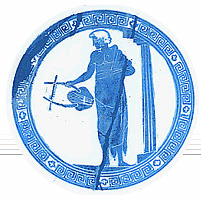Practice
Test No. 3
THE BAROQUE PERIOD (1600-1750)
Answers
1.
In
Opera when dramatic dialogue is half sung and half spoke it is called
______________.
2.
A
Baroque instrumental piece based entirely on a systematic procedure of
imitative polyphony based on a single theme is called______________.
3.
Which
part of music history is applied to the period 1600 to 1750?
4.
The
opening section of a fugue is called________________.
5.
The
theme of a fugue is called the_______________.
6.
A
passage in a fugue that doesn’t contain any complete entries of the fugue
subject and occurs between restatements of the fugue subject is called_______________.
7.
Ritornello
form is based on:
a.
a
constant variation of a ground bass
b.
the
alternation of various dance movements
c.
periodic
return of a central homophonic theme
d.
persistent
imitation of a single subject
8.
The
medieval church modes gradually gave way to which scales in the Baroque period?
9.
The
word Baroque has a various times meant all of the following except:
a.
elaborately
ornamented
b.
flamboyant
c.
excessive
d.
naturalistic
10.
The
two giants of Baroque composition were George Frederic Handel and_____________.
11.
A
common variation type form in the Baroque based upon the use of a ground bass
repeated over and over is a______________.
12.
The
text, or book, on which an opera is based for its story line is
called_______________.
13.
Sets
of dance-inspired instrumental movements are called__________________.
14.
An
opera-like composition on a religious subject is called__________________.
15.
The
Baroque era witnessed the appearance of the:
a.
solo
concerto
b.
concerto
grosso
c.
both
A and B
d.
neither
A not B
16.
An
important instrumental form of the Baroque, based on opposition between a small
group of instruments and a larger group, was________________.
17.
Which
two instruments would most likely have
played the basso continuo in the Baroque era?
18.
All
of the following were important scientists of the Baroque era except:
a.
Newton
b.
Galileo
c.
Curie
d.
Kepler
19.
How
many players are necessary to perform a trio sonata?
20.
Handel’s
Messiah is what type of piece or genre?
21.
Which
would best describes how Baroque musicians made a living?
22.
The
greatest composer of fugues during the Baroque period was_________________.
23.
What
is Opera Seria?
24.
A
sonata is?
25.
What
is the difference between an oratorio, cantata and an opera?
a.
they
have no difference
b.
a
cantata is instrumental
c.
two
are religious and one is secular
d.
one
is a religious and two are instrumental
26.
What
is a cadenza and what purpose does it serve?
27.
What
is the difference between recitative and aria?
Answers



